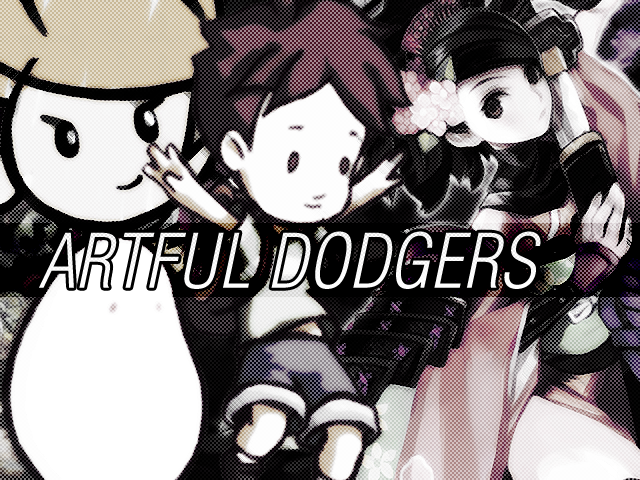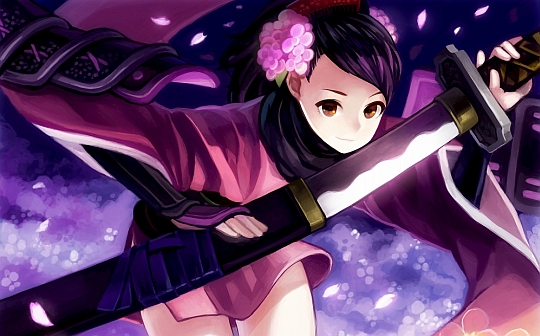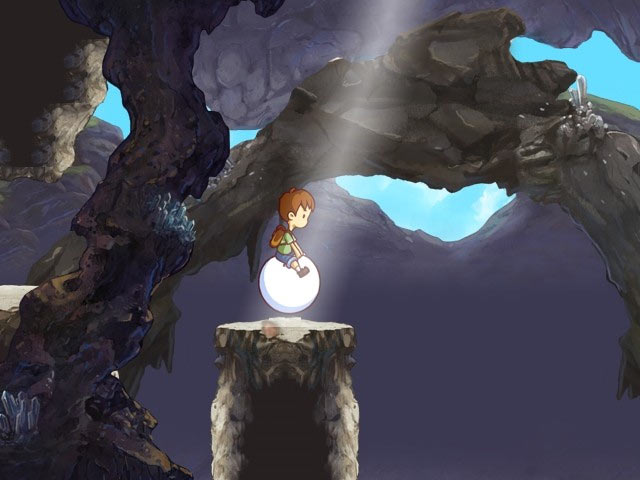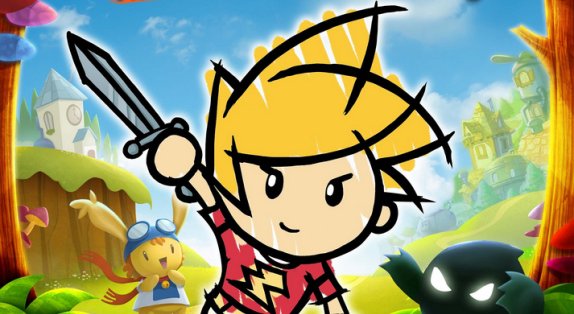
Take a sec and think back to the early 2000s– the era when our intrepid hero, Nintendo GameCube, dressed in Indigo, Jet Black, Spice and Platinum, fought against two not-so-upstart foes clad in oh-so-evil black. That console war was a Big Deal. Till then, Nintendo had clashed only with Sony and Sega– two Japanese companies with arguably Japanese intents and experiences– but now Microsoft was in the picture, and Things Were Different. Slowly, “Xbox” replaced “PlayStation” for the words “video game console” in daily parlance; “bigger is better” took on a whole new meaning when looking at the quote-unquote lunchbox that was the GameCube and the juggernaut of the Xbox.
But Nintendo fought on, releasing games like Super Smash Bros. Melee and The Legend of Zelda: The Wind Waker to try and satiate its ever-dwindling audience. Meanwhile, its enemies fired back with Halo 2 or Final Fantasy X, content only to cease fire on tri-platform games like Soul Calibur II. Eventually, Videogameland became defined not by gameplay (though certainly concern with that still existed), but by how great– that is, realistic– games looked. Compared with Gran Turismo 4 or Fable, the average non-believer thought even the vaunted Super Mario Sunshine a farce.
Now fast-forward to 2011 and realize that Things Are Different Again. With consoles like Nintendo’s Wii and DS came graphical restrictions arguably nonexistent on its more powerful competitors– though with aspects such as motion control and touch capabilities that certainly opened up other avenues of creativity. Creativity, in fact, that turned out not limited to mere gimmicks (though we had that– hello, Ping Pals, hi Carnival Games) but also a little something we’ll call the Hand-Drawn Rebellion.
Now, of course, hand-drawn games existed before games like Muramasa: The Demon Blade and A Boy and His Blob. Certainly cel-shaded games were trying to make a comeback during the Era of the Cube with The Legend of Zelda: The Wind Waker or, hey, Cel Damage and Freaky Flyers, but this was hardly an organized revolution. It was only with Wii and DS that games with highly stylized graphics like MadWorld appeared in full force, rebelling against the Powers that Be.
As Keiji Inafune famously told The New York Times, developers were recognizing the full limits of console graphical capabilities in relation to video games, realizing that games, everywhere, would eventually look just the same as the real life world that spawned them. Clearly, this all-realistic, all-the-time thing would make a droll Videogameland with “no diversity, no originality,” as Inafune says– a Videogameland full of uncanny valleys that scare even the most hardened Resident Evil fan to zombie undeath. MadWorld and A Boy and His Blob became just what the industry needed. So let’s take a minute– just sit right there– and see the games that gave the world a breath of fresh air.
Muramasa: The Demon Blade

What’s an action RPG? (Think fast.) Diablo, maybe. Perhaps even Phantasy Star Online. What you don’t think of, generally, is a game like Muramasa: The Demon Blade, where you slash open foes and throw various aerodynamic implements, all the while marveling at how beautiful your handiwork (read: enemy corpses) looks, dancing in the hand-drawn moonlight. Well, actually, maybe you do think of a game like this, but only because you’re constantly surrounded by games like Muramasa in the wake of the Hand-Drawn Rebellion. The gaming press was all over this game and for good reason: nobody had ever seen anything like it. At least, not in motion.
What Muramasa attempts to do is the same thing games like The Legend of Zelda: The Wind Waker tried to do in the Era of the Cube– that is, make playing a cartoon a reality. And thanks to the Wii’s slightly more powerful graphics capabilities, this is a much more probable task that is best appreciated in motion. That’s the whole point of controlling a cartoon, after all. Furthermore, considering the basis of Muramasa in ancient Japanese fable, as well as a graphical style from ukiyo-e woodblock prints and Japanese anime/manga in general, somehow one wonders why Muramasa wasn’t made earlier. Here is a game that takes what Japan arguably repopularized– video games– and feeds Japan back into the system, making Muramasa a cultural product two times over, and one of the most stylized games this generation. Diablo can suck it.
A Boy and His Blob

If Muramasa: The Demon Blade is about tuning into Japanese cultural concepts, all the while redefining what an action RPG should look like, then A Boy and His Blob taps into the phenomenon of making childlike dreams a reality. Much like Where the Wild Things Are was repurposed forty-six years after its initial publication for the silver screen (and for a new generation of hipsters), A Boy and His Blob takes an NES game from 1990, A Boy and His Blob: Trouble on Blobolonia, and instead of sticking with the original art style, changes it into a rather unreal (but so good) tale of unlikely friendship.
Though it’s a bit unfair to say that it’s because of the art style that this reinterpretation is better than the original NES game. One could say that the NES developers did want to make something like A Boy and His Blob, but lacked the graphical capabilities– which brings us to another point. Thank goodness for technology that we can have art styles explored to the fullest extent, and have characters’ faces actually react to the environments in which they play. Let’s just throw it out there: A Boy and His Blob is artsy in a way that many platformers (Trine, Spyro) can’t be.
In fact, it’s the art style of A Boy and His Blob that arguably makes the game work. This is not a game where you blow up Russians in an airport. Rather, it’s a game where exploring caves isn’t just a job for over-achieving adventurers or plumbers who took a wrong turn– but rather for children who, like Shigeru Miyamoto himself, become inspired by diving into the alternately shiny-and-fascinatingly-horrific caves that the Earth holds. The caves (and other environments) in A Boy and His Blob aren’t dangerous, entirely. Rather, their emptiness seems inviting for gamers’ own creativity, and certainly the creativity that the eponymous Blob provides in its various shapeshifting capabilities. Whether the gamers are children or not doesn’t matter. A Boy and His Blob, with its hand-drawn graphics, hearkens back to a time when they were.
On a side note, it’s interesting that recent interest in platformers has started to rise again, after the sorry days of Crash Bandicoot and Spyro the Dragon. (Though the former gave rise to Jak and Daxter, though even that series has been driven off the platformer genre with every passing sequel.) A Boy and His Blob, of course, is one of these “new age” platformers; Henry Hatsworth in the Puzzling Adventure and Wario Land: Shake It! are two others. One could say that it’s because of the simplicity of platformers, compared with the ever-more-complex first-person shooters and other games being developed. One could also say it’s because platformers constantly have a childlike charm to them– of which hand-drawn graphics play no small part.
Drawn to Life

While Drawn to Life received mostly positive reviews for its concepts of, well, having player drawings being brought to video-game-life (like Scribblenauts, but with art instead of words), its platforming tech (mostly regarding the allegedly “impossible” final boss) was somewhat suspect. No matter, however, because we’re in the business of recognizing artsy (or at least interesting) concepts when we see them– and Drawn to Life, as a game that depends on the player’s artistic ability, is as artsy as the rest of them.
The thing about Drawn to Life is that it expects nothing from its players except that they simply try to play the game. Not even a modicum of artistic ability is needed, though because it may get old seeing a certain drawing time after time, the game does encourage players to try their best. (This writer just drew Dittos of varying sizes for every artistic prompt he got and very quickly became sick of the 132nd Pocket Monster.) Thus, Drawn to Life can be as creative and artsy as the player wants it, aside from the backgrounds and other premade materials. Which is interesting, considering the games we’ve discussed so far can be construed as rebellions of the usual platforming/action game graphical styles– or at least reflections of them.
Drawn to Life rebels not only against the obvious idea that games are built by developers and can’t be changed (though its linear storyline undermines that idea, but what can you do), but also against the idea that players are these passive creatures that don’t care about what’s in their games. It puts at least a little power in players’ hands, admitting that, yes, the video game industry is lacking creativity, maybe y’all have more. Maybe it’s not what Keiji Inafune believes in, but it’s a start.
There’s a lot of games out there these days that boast hand-drawn graphics– and despite some of them being very apparent rip-offs of legitimately innovative games, the idea that hand-drawn graphics will be here to stay doesn’t bother us in the slightest. Just so long as we all remember what Videogameland could’ve been without these works of art: one filled with drollest drudgery. And so, the Hand-Drawn Rebellion is one that needs to keep going, in both body and spirit.
What are your favorite hand-drawn games? Why do you like them? Let us know in the comments below!




 ShareThis
ShareThis







I love any plug for a boy and his blob. Its my favorite game on Wii. I enjoyed your insights.
Excellent article, but I must shamefully admit I haven’t played any of these. *hides in corner*
I do, however, own Wario Land: Shake It!, which also uses really smooth, hand-drawn aesthetics. I thought that game was a lot of fun.
Wario Land: Shake It! was an under-rated blast. The art was absolutely magnifique.